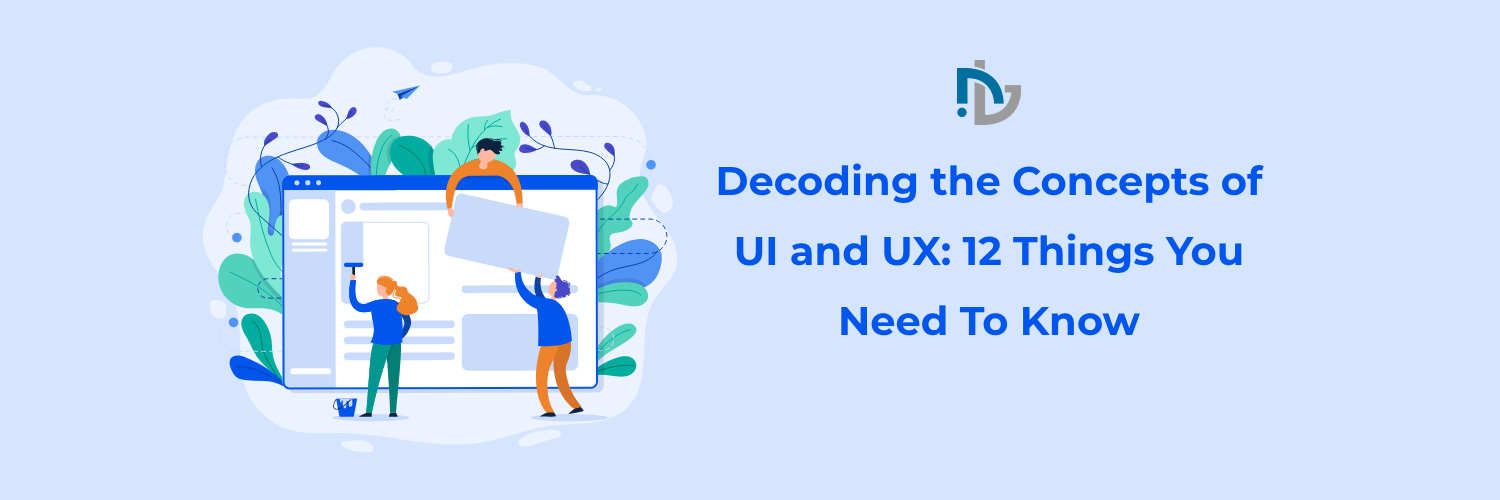UI (user interface design) and UX (user interface experience) are an integral part of the app development process. It is a complex journey and becomes even more complicated if you don’t have a basic knowledge.
The good news is that more companies are recognizing the need for UI and UX. Apple is known to be the champion of UI and UX, and every iPhone user will give you 10+ reasons why their interaction with their iPhone and iPod is so seamless.
The performance of the apps and screens is natural and will give you a ‘magical’ experience. To attain this level, you need to have a strong base and equip yourself with all the basics.
Taking this forward, we are here to ease all your struggles and help you understand some generic things about UI and UX.
Get the best advice from the best eCommerce web design company.
Understanding UI and UX
UX is the process of improving the overall experience of the users during their interaction with the application and providing customer satisfaction. It focuses on wireframing an app, structuring components and likewise.
On the other hand, UI is the procedure of improving the presentation and interactivity of the mobile application or website. It focuses on the app’s look, screen layout, page buttons and other visual elements.
In a nutshell, UI handles the overall ‘look’ of an application/ website, while UX looks after the ‘working’.
Do you know what the key elements required in a UI and UX design are?
Critical Components of UI and UX
- information architecture
- usability
- interactive design
- wireframing
- visual design
If you are aware of these five components, then you may be aware of some of the below information about your UI and UX designs. Get Set, Go!
12 Things you need to know about UI and UX
UI and UX go hand-in-hand, and the reason behind every product’s success depends on the balance between your UI and UX designs.
Think about a simple button on a website. The UX designer will see if it is in the right place to make navigation easier. While the UI designer will work on how the button will look and it’s functioning. Let’s know more about UI and UX below:
1. UI and UX are two different terms
Many people use UI and UX interchangeably, but they’re not alike. Don’t be surprised, but the UI is a part of UX. The focal point of UX designs revolves around usability, functionality, simplicity and clarity of the respective product or service.
Here, designers need to focus on two things:
- problems within the website/application
- how easy or hard it is to operate
While UI is all about visual experiences and focuses more on the ‘look’ and ‘feel’ of the product or service.
2. Your user’s choices may differ from yours
It is the most prominent mistake designers make when they think that their audience is like them. Neglecting the preferences of your target audience is a big C-R-I-M-E.
You should probably know that your audiences belong to different backgrounds, mindsets, goals and objectives of your product. They don’t have the same beliefs as you do. All your future products are designed for keeping your audience in mind.
Basically, this resembles a psychological term ‘false-consensus effect’ wherein people tend to overestimate their opinions, preferences, and values with others.
Are you suffering from a false-consensus effect?
3.UX designs should be made to attract a mindset
Your organization should understand what UX design is in the first place. UX is the heart of the great product, and the mass adoption of any product depends on intuitive and seamless user experience. Software providers should ensure that the designs are developed with a customer-centric mindset.
4. There are no universal UX processes
Without a solid UX process, you are nowhere near to develop excellent user experience. Designers need to understand that there is no one-size-fits-all UX design process. Every project is unique and requires a different process.
In case you are designing a new product, you need time to research the trends and requirements of the product/service. If you are working on an existing project, then you need time for design validation, A/B testing, usability, and analytics reports.
Get acquainted with the most reputed custom web design services for excellent customer experience.
5. Access all your pages with a maximum of 3 clicks
Well, this is partially true. Many believe that every corner of the website should be reachable and quick to respond within a few clicks. Instead, you have to lure your visitor with less information at a time such that your user visits you again
Example: ‘About the company’ button.
You should give company, product or service related information in nuts and bolts with easy website navigation buttons. Keep a close eye on the attention span chart of your audience and work on bringing ‘vital information’ directly on the plate.
6. Accustom your design for short attention spans
Attention span is the amount of concentration-time a person spends on a task without any form of distraction. The golden rule is to be crisp with your information.
According to a study, the average human attention span is only 8 seconds – less than a goldfish.
Researchers claim that your attention span has markedly decreased in just 15 years. The 21st-century customer needs to know everything in just a glance. Designers need to cope up with this behavior and provide information as quickly as possible.
This is what Google Chrome did to capture their audience’s attention. They came up with a captivating loader when a page would take time to load. Today, more and more designers are coming up with such creative ideas. It’s time to brainstorm your mind!

7. Include a prototyping stage
Prototyping means creating a model that allows you to test your hypothesis before building an actual product. One of the best techniques is rapid prototyping wherein you prepare a ‘demo’ model and validate it with users.
If you are skipping on prototyping and utilizing more energy in preparing an actual product, then you are making a huge mistake just as other designers. Putting a lot of effort into creating something adds stress, and it doesn’t work as expected. Share to get more ideas.
8. Say no to dummy play holders
Use real images and content when designing. Many designers use software and dummy play cards during the designing phase. Use as much as real texts, images or videos as the design may look great on the artboard but turns out to be a total flop when you fill it with real data.
Lesson: Never abstract yourself from real experience.
9. Let your design be simple and consistent
In the context of digital products, simplicity is the king and consistency is the queen. Your design should be simple to understand and interact. It’s your job to make things clear and subtle such that your user doesn’t need a guide to understand and map to navigate.
Keep your designs consistent throughout the website. Sometimes, adding creativity may bring inconsistencies. Different colored schemes may confuse and leave your user annoyed. Use the Principle of Least Astonishment (POLA) and match your design with the mental model of your expected audience.
10. Choose recognition over recall
Your designs should ensure that users can automatically recognise your product’s features or other components without making them go through a time-consuming recalling process.
Every human being’s memory has a limitation and designers should stop making their users run around the bush. Focus on minimising the cognitive load by making information and interface features and functions more accessible.
11. Create designs that are usable and accessible
We all love to see beautiful things. But you can’t compromise on functionality and accessibility also. For many, esthetics is more important than usability. All your appealing designs would be meaningless if you don’t have usable products, or your website doesn’t function properly.
Accessible design is synonymous with excellent navigation, understanding, and using digital products successfully. Better accessibility leads to usability.
12. Never try to solve everything at once
UX design is not a linear process, as discussed earlier. There are different phases like ideation, prototyping and testing that needs a lot of time and effort.
There might be times when you have to revisit some of the research undertaken and try out new ideas on the existing ones. Your design can never be perfect after just one iteration.
Try to refine your ideas and test it with real users. Don’t forget to collect relevant feedback and iterate according to the user’s needs.
Make your audience happy with these latest UI and UX trends!
What’s making news in 2020?
We bring to you some main features that will rock the industry. I hope you collect some for your next design project.
- Dark modes and themes
- Custom and surreal design
- Minimalist design
- Voice control
- Creative loaders
The year 2020 will be more about creativity, chaos and innovative solutions. You need to think out-of-the-box to become the next champion.
Also, creativity should match well with the product’s niche, goals and aims. So, don’t be afraid to experiment!
Mistakes are the only way to learn!
No one is perfect, and perfectionism is the enemy to skill development. You should never be afraid of making mistakes as it is the best way of learning. Come up with different UX designs and approaches and see which one fits best for you.
Understanding the basics and trying out new things is the only key to great UX and UI designs.
NectarBits is a pioneer in providing incredible and attractive web designs, mobile application development designs, design solutions. We have mastered the art of designing web applications for managing various business sectors like eCommerce, photography, medicine and more. Rely on the best UI/UX development company. Let’s talk!




